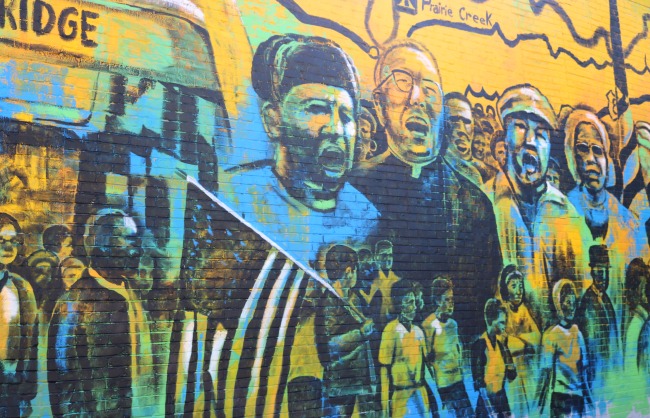Rosa Louise McCauley Parks was an African-American activist in the civil rights movement best known for her pivotal role in the Montgomery bus boycott. The United States Congress has called her “the first lady of civil rights” and “the mother of the freedom movement”.
She was born on February 4, 1913, in Tuskegee, Alabama. Her parents were James and Leona McCauley while her maternal grandparents were Rose and Sylvester Edwards. Both of Parks’ grandparents were former slaves and strong advocates for racial equality; the family lived on the Edwards’ farm, where Parks would spend her youth.
In 1932, at age 19, Parks met and married Raymond Parks, a barber and an active member of the National Association for the Advancement of Colored People (NAACP) . The pair didn’t have kids.

After graduating high school with Raymond’s support, Parks became actively involved in civil rights issues by joining the Montgomery chapter of the NAACP in 1943, serving as the chapter’s youth leader as well as secretary to NAACP President E.D. Nixon — a post she held until 1957.
On December 1, 1955, Parks was arrested for refusing a bus driver’s instructions to give up her seat to a white passenger. She had closed from work from a Montgomery department store, where she worked as a seamstress. The driver seeing whites standing in the bus asked four Blacks to give up their seats for them. Three did but the fourth Mrs. Parks declined, saying she was tired of giving up. The bus driver had the authority to refuse service and could call the police to have a Black removed.
The police arrested Parks at the scene and charged her with violation of Chapter 6, Section 11, of the Montgomery City Code. She was taken to police headquarters, where, later that night, she was released on bail.

The Montgomery Bus Boycott by African-Americans followed crippling the city’s transport system.
Although Parks was not the first person to resist bus segregation, NAACP believed that she was the best candidate for seeing through a court challenge after her arrest for civil disobedience in violating Alabama segregation laws.
In her memory, the Rosa Parks Library & Museum is operational to guide people through the historical moments.

“Located on the campus of Troy University at the site of her arrest, the Rosa Parks Library and Museum is an interactive experience for all ages. The tour begins with a 3-D presentation of Ms. Parks’ refusal to vacate her seat and her subsequent arrest. This presentation, using dialogue from the times, as well as a graphic presentation of the bus ride, is designed to capture the attention of adults and children. After the presentation everyone in the room stood silently, staring at the wall, forgetting to enter the next section of the exhibit.
“The museum continues with artifacts from the Montgomery Bus Boycott, along with descriptions of the hardships faced by the people involved in the movement.”
With many choosing to walk to work and church during the boycott, people who tried to help others by driving them to their jobs, were fined or arrested if they accepted money for gas, but Montgomery churches who supported the movement came up with an ingenious solution to the problem.

The tour also has a short speech by Mrs. Parks. “The museum’s collection contains a number of historically significant artifacts including the original fingerprint arrest record of Mrs. Parks, a 1950s-era Montgomery city bus, original works of art including statuary and quilts, court documents and police reports, as well as a restored 1955 station wagon (known as a “rolling church”) used to transport protesters.”
The museum is not large in size, but a visitor can spend one to two hours to take in all the exhibits. The museum is open Monday through Friday from 9:00 AM – 5:00 PM and 9:00 AM- 3:00 PM on Saturdays.

The facility is the nation’s only museum dedicated to Rosa Parks. Authorities say their mission is to honor her legacy and that of the boycott by providing a platform for scholarly dialogue, civic engagement, and positive social change.
You’ll meet Rev. Dr. Martin Luther King, Jr. and see the mass effect the Montgomery Bus Boycott and Civil Rights Movement had on the world also.
Troy University is a public tertiary outfit in Alabama. It was founded in 1887 as Troy State Normal School within the Alabama State University System and is now the flagship university of the Troy University System.











